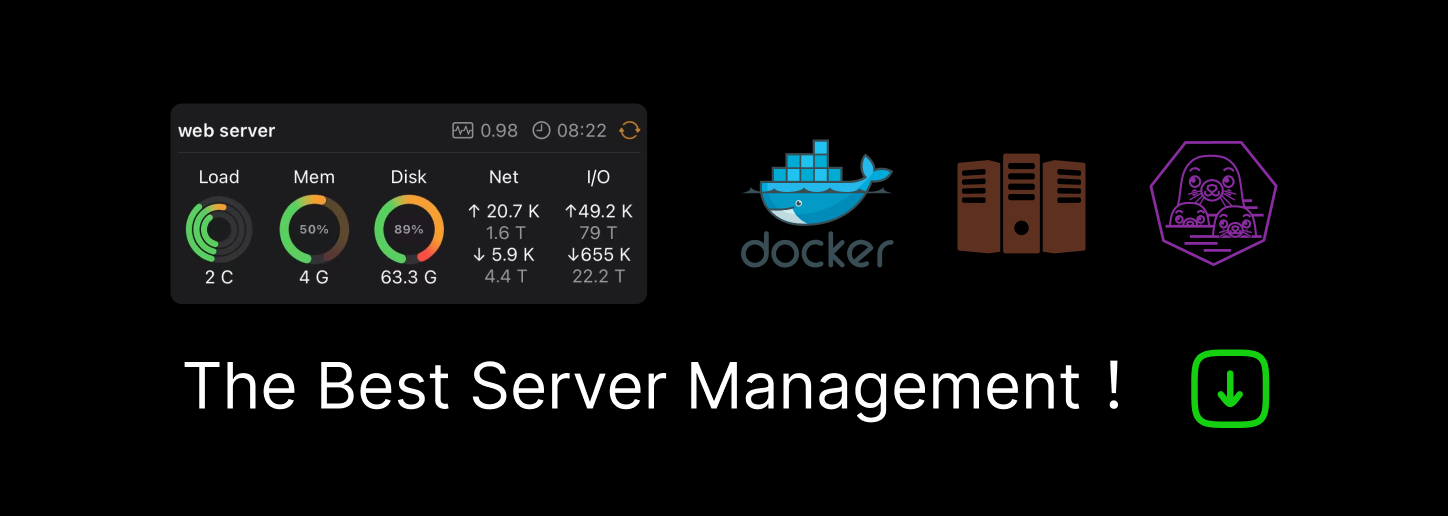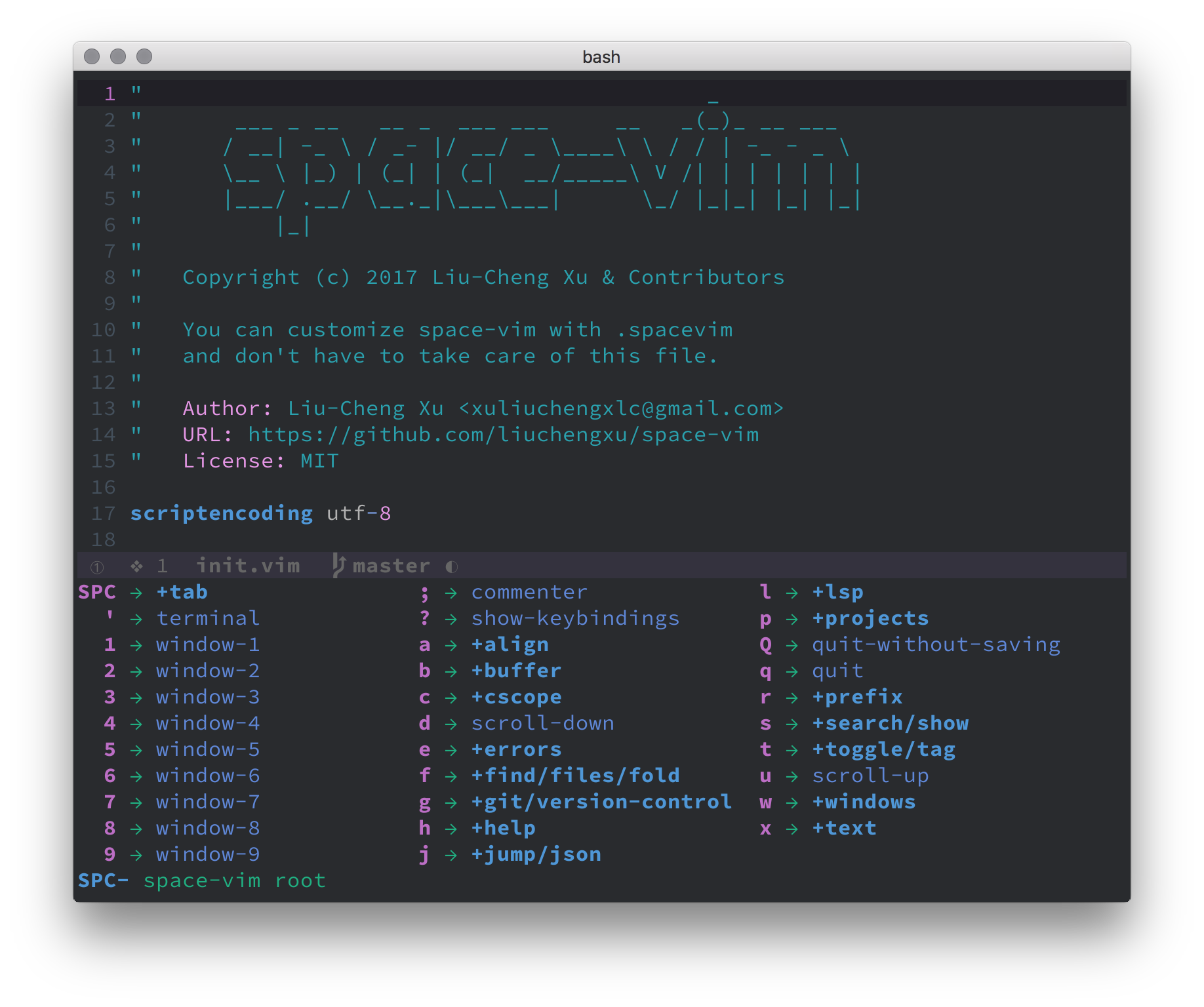

GitHub - liuchengxu/vim-which-key: Vim plugin that shows keybindings in popup
source link: https://github.com/liuchengxu/vim-which-key
Go to the source link to view the article. You can view the picture content, updated content and better typesetting reading experience. If the link is broken, please click the button below to view the snapshot at that time.

README.md
vim-which-key
Introduction
vim-which-key is vim port of emacs-which-key that displays available keybindings in popup.
emacs-which-key started as a rewrite of guide-key, very likely, vim-which-key heavily rewrote vim-leader-guide with a goal of going further in vim world. The features of vim-which-key has evolved a lot since then.
Pros.
- Show all mappings following a prefix, e.g.,
<leader>,<localleader>, etc. - Instant response for your every single input.
- Dynamic update on every call.
- Define group names and arbitrary descriptions.
Installation
Plugin Manager
Assuming you are using vim-plug:
Plug 'liuchengxu/vim-which-key' " On-demand lazy load Plug 'liuchengxu/vim-which-key', { 'on': ['WhichKey', 'WhichKey!'] }
For other plugin managers please refer to their document for more details.
Package management
Vim 8
$ mkdir -p ~/.vim/pack/git-plugins/start $ git clone https://github.com/liuchengxu/vim-which-key.git --depth=1 ~/.vim/pack/git-plugins/start/vim-which-key
NeoVim
$ mkdir -p ~/.local/share/nvim/site/pack/git-plugins/start $ git clone https://github.com/liuchengxu/vim-which-key.git --depth=1 ~/.local/share/nvim/site/pack/git-plugins/start/vim-which-key
Requirement
vim-which-key requires option timeout is on, see :h timeout.
Since timeout is on by default, all you need is not to set notimeout in your .vimrc.
Usage
timeoutlen
Let's say SPC is your leader key and you use it to trigger vim-which-key:
nnoremap <silent> <leader> :WhichKey '<Space>'<CR>
After pressing leader the guide buffer will pop up when there are no further keystrokes within timeoutlen.
" By default timeoutlen is 1000 ms set timeoutlen=500
Pressing other keys within timeoutlen will either complete the mapping or open a subgroup. In the screenshot above SPCb will open up the buffer menu.
Please note that no matter which mappings and menus you configure, your original leader mappings will remain unaffected. The key guide is an additional layer. It will only activate, when you do not complete your input during the timeoutlen duration.
Configuration
Miminal Configuration
If no description dictionary is available, the right-handle-side of all mappings will be displayed:
nnoremap <silent> <leader> :<c-u>WhichKey '<Space>'<CR>
However, the dictionary configuration is necessary to provide group names or a description text.
let g:which_key_map['w'] = { \ 'name' : '+windows' , \ 'w' : ['<C-W>w' , 'other-window'] , \ 'd' : ['<C-W>c' , 'delete-window'] , \ '-' : ['<C-W>s' , 'split-window-below'] , \ '|' : ['<C-W>v' , 'split-window-right'] , \ '2' : ['<C-W>v' , 'layout-double-columns'] , \ 'h' : ['<C-W>h' , 'window-left'] , \ 'j' : ['<C-W>j' , 'window-below'] , \ 'l' : ['<C-W>l' , 'window-right'] , \ 'k' : ['<C-W>k' , 'window-up'] , \ 'H' : ['<C-W>5<' , 'expand-window-left'] , \ 'J' : ['resize +5' , 'expand-window-below'] , \ 'L' : ['<C-W>5>' , 'expand-window-right'] , \ 'K' : ['resize -5' , 'expand-window-up'] , \ '=' : ['<C-W>=' , 'balance-window'] , \ 's' : ['<C-W>s' , 'split-window-below'] , \ 'v' : ['<C-W>v' , 'split-window-below'] , \ '?' : ['Windows' , 'fzf-window'] , \ }
Example
Refer to space-vim for more detailed example.
" Define prefix dictionary let g:which_key_map = {} " Second level dictionaries: " 'name' is a special field. It will define the name of the group. " leader-f is the "+file" group. " Unnamed groups will show a default string let g:which_key_map.f = { 'name' : '+file' } nnoremap <silent> <leader>fs :update<CR> let g:which_key_map.f.s = ['update', 'save-file'] " Provide commands and descriptions for existing mappings " command, <Plug>/<C-W>/<C-d> mapping are supported nnoremap <silent> <leader>fd :e $MYVIMRC<CR> let g:which_key_map.f.d = ['e $MYVIMRC', 'open-vimrc'] let g:which_key_map.o = { 'name' : '+open' } nnoremap <silent> <leader>oq :copen<CR> let g:which_key_map.o.q = ['copen', 'open-quickfix'] nnoremap <silent> <leader>ol :lopen<CR> let g:which_key_map.o.l = ['lopen', 'open-locationlist'] " Create new menus not based on existing mappings: let g:which_key_map.b = { \ 'name' : '+buffer' , \ '1' : ['b1' , 'buffer 1'] , \ '2' : ['b2' , 'buffer 2'] , \ 'd' : ['bd' , 'delete-buffer'] , \ 'f' : ['bfirst' , 'first-buffer'] , \ 'h' : ['Startify' , 'home-buffer'] , \ 'l' : ['blast' , 'last-buffer'] , \ 'n' : ['bnext' , 'next-buffer'] , \ 'p' : ['bprevious' , 'previous-buffer'] , \ '?' : ['Buffers' , 'fzf-buffer'] , \ } let g:which_key_map.l = { \ 'name' : '+lsp' , \ 'f' : ['LanguageClient#textDocument_formatting()' , 'formatting'] , \ 'h' : ['LanguageClient#textDocument_hover()' , 'hover'] , \ 'r' : ['LanguageClient#textDocument_references()' , 'references'] , \ 'R' : ['LanguageClient#textDocument_rename()' , 'rename'] , \ 's' : ['LanguageClient#textDocument_documentSymbol()' , 'document-symbol'] , \ 'S' : ['LanguageClient#workspace_symbol()' , 'workspace-symbol'] , \ 'g' : { \ 'name': '+goto', \ 'd' : ['LanguageClient#textDocument_definition()' , 'definition'] , \ 't' : ['LanguageClient#textDocument_typeDefinition()' , 'type-definition'] , \ 'i' : ['LanguageClient#textDocument_implementation()' , 'implementation'] , \ }, \ }
To make the guide pop up Register the description dictionary for the prefix first (assuming Space is your leader key):
call which_key#register('<Space>', "g:which_key_map") nnoremap <silent> <leader> :<c-u>WhichKey '<Space>'<CR> vnoremap <silent> <leader> :<c-u>WhichKeyVisual '<Space>'<CR>
The guide will be up to date at all times. Native vim mappings will always take precedence over dictionary-only mappings.
It is possible to call the guide for keys other than leader:
nnoremap <localleader> :<c-u>WhichKey ','<CR> vnoremap <localleader> :<c-u>WhichKeyVisual ','<CR>
Hide statusline
Since the theme of provided statusline is not flexible and all the information has been echoed already, I prefer to hide it.
autocmd! FileType which_key autocmd FileType which_key set laststatus=0 noshowmode noruler \| autocmd BufLeave <buffer> set laststatus=2 showmode ruler
Commands
See more details about commands and options via :h vim-which-key.
:WhichKey {prefix}
Open the guide window for the given prefix
:WhichKey! {dict}
Open the guide window for a given dictionary directly
Options
Variable Default Descriptiong:which_key_vertical
0
show popup vertically
g:which_key_position
botright
split a window at the bottom
g:which_key_hspace
5
minimum horizontal space between columns
Credit
Recommend
-
 121
121
vim-gitgutter A Vim plugin which shows a git diff in the sign column. It shows which lines have been added, modified, or removed. You can also preview, stage, and undo individual hunks; and stage partial hunks. The plugin also provides...
-
 173
173
Table of Contents Introduction space-vim is a vim distribution for vim plugins and resources, compatible with Vim and NeoVim. It is inspired by
-
 87
87
evil-org Supplemental evil-mode key-bindings to Emacs org-mode. This project is a continuation of https://github.com/edwtjo/evil-org-mode/blob/m...
-
 162
162
dotfiles dotfiles for Linux and macOS Usage These are my very private configu...
-
 141
141
Evil Collection This is a collection of Evil bindings for the parts of Emacs that Evil does not cover properly by default, such as help-mode, M-x...
-
 55
55
GitHub is where people build software. More than 28 million people use GitHub to discover, fork, and contribute to over 79 million projects.
-
 73
73
README.md vim-better-default There are some general settings for convenience in almost everyone's .vimrc file. Let's shorten your .vimrc and make the default vim bette...
-
 294
294
README.md Vista.vim View and search LSP symbols, tags in Vim/NeoVim. ⚠️Currently vista.vim is mostly usable, yet not stable. All the pub...
-
 36
36
To fix the performance issue, ensure you have Rust installed on your system and run :call clap#helper#build_all(). Introduction Th...
-
 10
10
About Joyk
Aggregate valuable and interesting links.
Joyk means Joy of geeK



